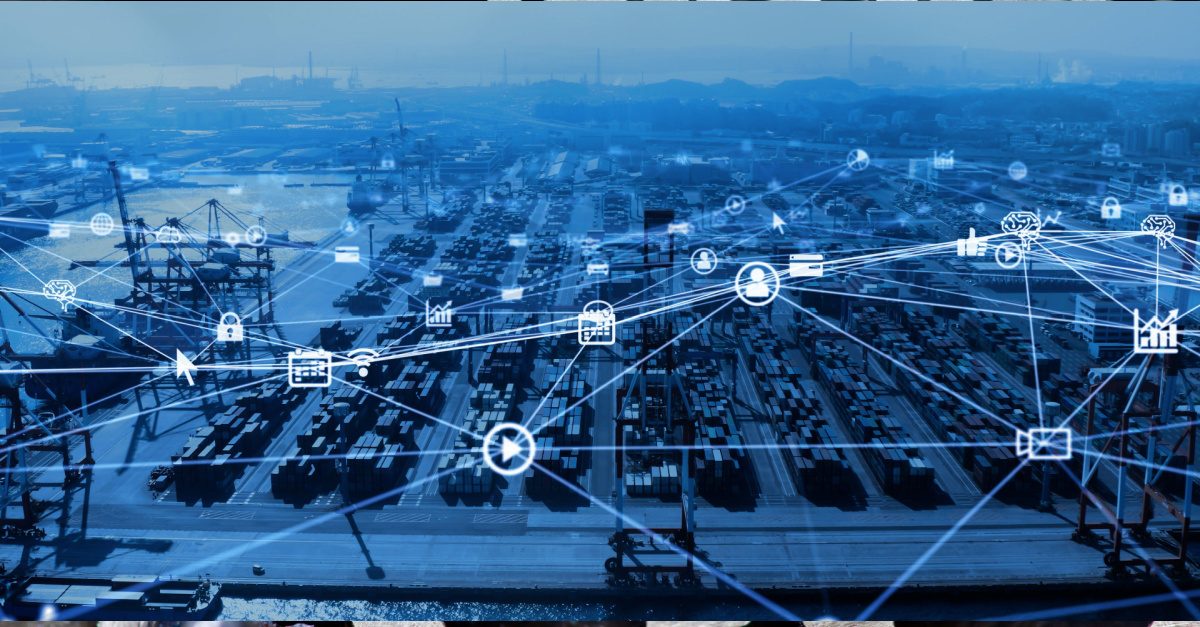
What you need to know about port automation
The world of port automation is yours to explore. The shipping sector is not far behind in a time dominated by technological breakthroughs. Port automation is transforming how commodities are handled, increasing productivity and streamlining processes. However, what precisely is port automation, and why is it causing such a stir in the marine industry? Let’s examine the essential elements of port automation, highlighting its advantages, difficulties, and current trends in the sector.
We will examine how these technological developments, such as robotic container handlers and automated cranes, convert ports into highly productive and sustainable commercial hubs to provide you with the fundamental information you need to navigate the fascinating world of port automation, whether you’re a shipper, a port operator, or simply interested in the logistics of the future.
The basics of port automation: Need to know
Port automation refers to the use of advanced technologies and robotics to automate various aspects of port operations. These technologies include robotic container handlers, automated cranes, and intelligent conveyor systems. By replacing manual labour with automated systems, ports can significantly increase their efficiency and reduce the risk of accidents.
One of the key components of port automation is the use of automated guided vehicles (AGVs) to transport containers within the port. These AGVs are equipped with sensors and navigation systems that allow them to navigate the port without human intervention. They can transport containers from ships to storage yards or vice versa, ensuring that the entire process is carried out smoothly and efficiently.
Another important aspect of port automation is the implementation of smart systems that enable real-time monitoring of container movements. These systems use sensors and data analytics to containers’ location, condition, and status, providing accurate and up-to-date information to port operators and shippers. This enables them to make informed decisions and optimise the flow of goods through the port.
Challenges and considerations of port automation
While port automation offers numerous benefits, it also comes with its own set of challenges and considerations. One of the primary challenges is the high cost of implementing automated systems. The initial investment required for installing robotic equipment, sensors, and smart systems can be substantial, especially for smaller ports or those with limited resources.
Additionally, the maintenance and operation costs of these systems can also be significant.
Another challenge is the potential impact on the workforce. As more tasks become automated, there is a risk of job displacement for port workers. However, it is important to note that port automation does not necessarily lead to job losses. Instead, it can free up human resources from repetitive and physically demanding tasks, allowing them to focus on more complex and value-added activities.
Furthermore, the integration of various technologies in a port automation system can be complex and require extensive planning and coordination. The interoperability of different systems and the compatibility of hardware and software components need to be carefully considered to ensure smooth operations.
Lastly, cybersecurity is a critical consideration in port automation. As ports become more connected and reliant on digital systems, they also become more vulnerable to cyber threats. Proper security measures, such as firewalls, encryption, and regular system audits, need to be in place to protect port operations from potential cyber-attacks.
Human-Machine Collaboration in Automated Ports
Contrary to popular belief, port automation does not completely eliminate the need for human involvement. Instead, it promotes a collaborative approach between humans and machines, where each complements the other’s strengths. While machines handle repetitive and physically demanding tasks, humans provide the critical thinking, creativity, and adaptability required for complex decision-making and problem-solving.
In automated ports, humans play a crucial role in overseeing and managing the operations of automated systems. They are responsible for monitoring the performance of the machines, ensuring their proper functioning, and troubleshooting any issues that may arise. They also provide the expertise and knowledge required to make strategic decisions and optimise the overall performance of the port.
Impact of port automation on Efficiency and Productivity
Port automation significantly impacts the efficiency and productivity of port operations. By replacing manual labour with automated systems, ports can achieve higher throughput rates, reduce operational costs, and improve overall performance.
Furthermore, port automation enhances safety and security. Automated systems can handle hazardous materials and heavy loads with precision and care, reducing the risk of accidents and injuries. Smart systems and sensors enable real-time monitoring of container movements, ensuring that goods are tracked and secured throughout the entire process. This not only protects the cargo but also helps prevent theft and smuggling.
Green Technologies in Automated Ports
In addition to the efficiency and productivity benefits, port automation also promotes sustainability and environmental responsibility through the use of green technologies. Automated ports are at the forefront of adopting environmentally friendly practises and technologies that minimise their carbon footprint and reduce environmental impact.
One of the key green technologies in automated ports is the use of electric-powered equipment. By replacing diesel-powered machinery with electric alternatives, ports can significantly reduce air pollution and noise levels. Electric cranes, AGVs, and other equipment produce zero emissions at the point of use, making them a cleaner and quieter alternative.
Another green technology in automated ports is the integration of renewable energy sources. Ports are exploring the use of solar panels, wind turbines, and other renewable energy systems to power their operations. These energy sources can help reduce reliance on fossil fuels, lower greenhouse gas emissions, and contribute to a more sustainable energy mix.
Furthermore, automated systems enable better energy management and optimisation.
Conclusion
Port automation is transforming the maritime industry, including how commodities are handled and streamlining port operations. By adopting advanced technologies and robotics, ports can increase efficiency, reduce risks, and optimise the flow of goods. While port automation presents challenges related to cost, workforce, integration, and cybersecurity, these can be carefully addressed and managed.
Port automation promotes a collaborative approach between humans and machines, where each complements the other’s strengths. It improves efficiency and productivity by reducing human errors, optimising resource utilisation, and enhancing safety and security. Furthermore, port automation promotes sustainability and environmental responsibility through the use of green technologies. Electric-powered equipment, renewable energy sources, and energy optimisation measures contribute to a cleaner and more sustainable maritime industry.
In conclusion, the world of port automation is transforming global supply chains and offering exciting opportunities for shippers, port operators, and anyone interested in future logistics.
Author Bio Pramod Malnatchi

As a Content Writer at FOS Desk, I honed my writing skills while creating, compelling and engaging content for various niches like Logistics, Presentation software, and SaaS. Over the course of 2+ years, I gained valuable experience in crafting impactful articles, blog posts, and social media content that resonated with our target audience. Through collaboration with the team and the use of data-driven strategies, I helped to boost our brands and establish a strong online presence.

Advance your logistics capabilities, enhance your port operations, and develop your shipping service portfolio by investing in the future of your team. A professional qualification in Ports and Shipping, Logistics or Supply Chain from IoSCM will provide your employees with the skills and knowledge they need. Call 0800 1422 522 today to find out more, or click here for further information on the wide range of professional qualifications available with IoSCM.
